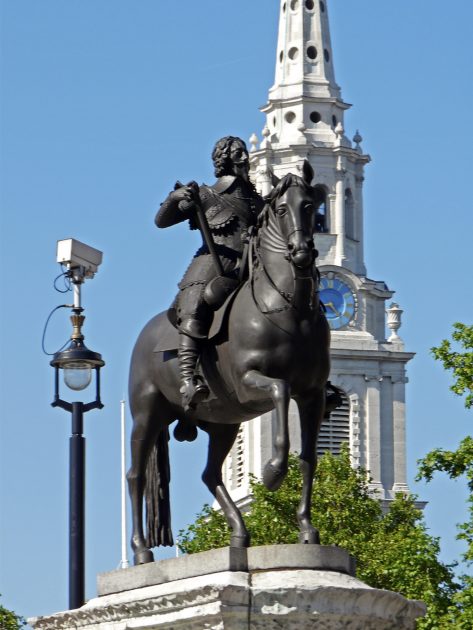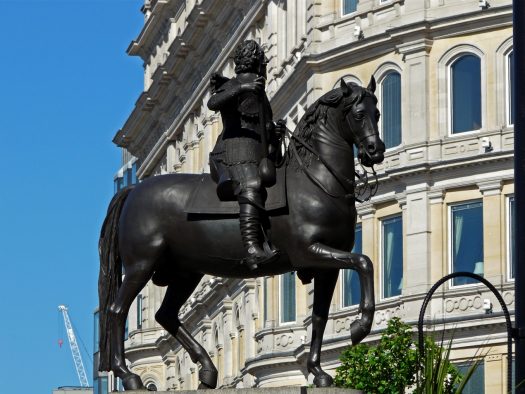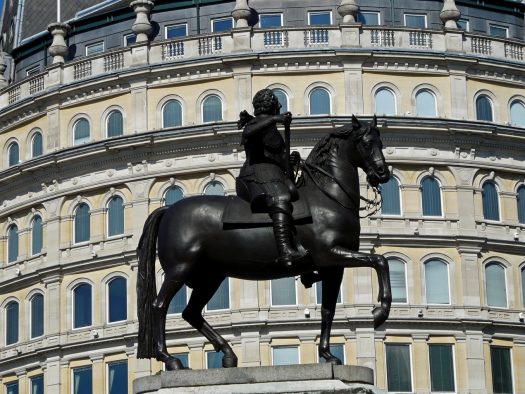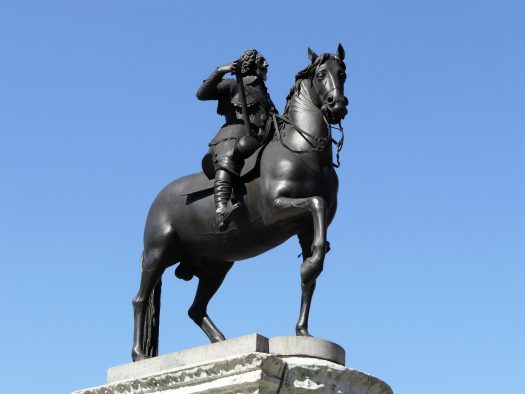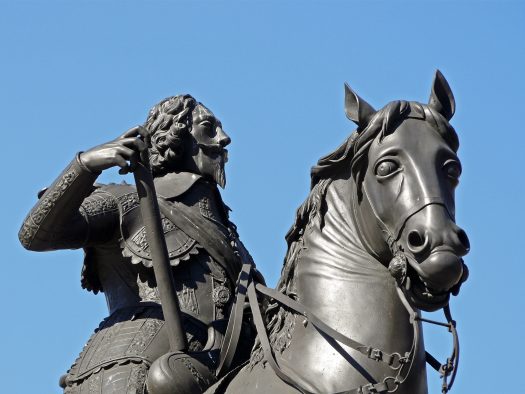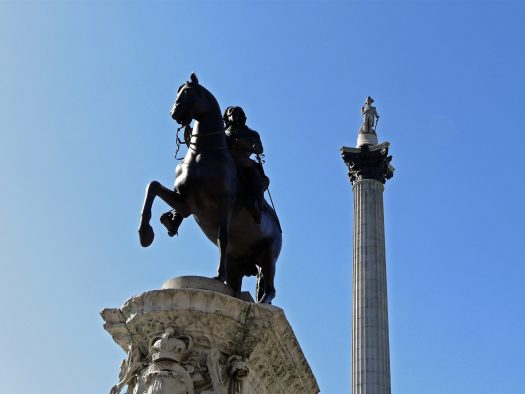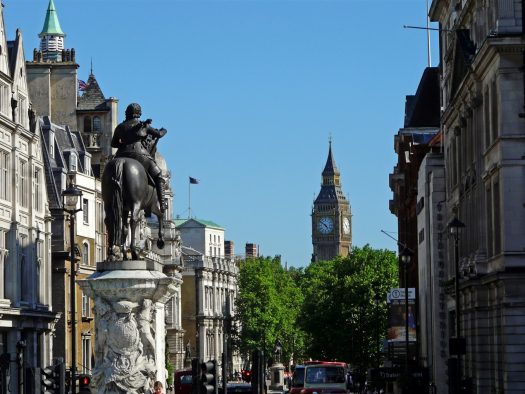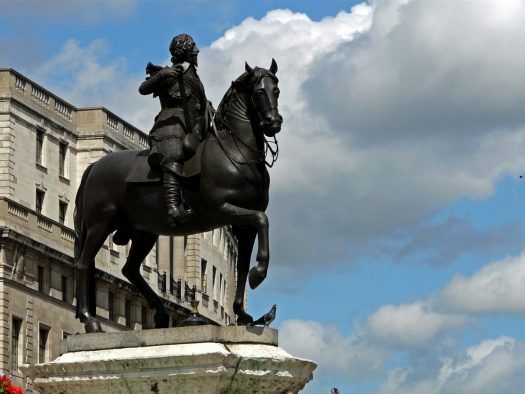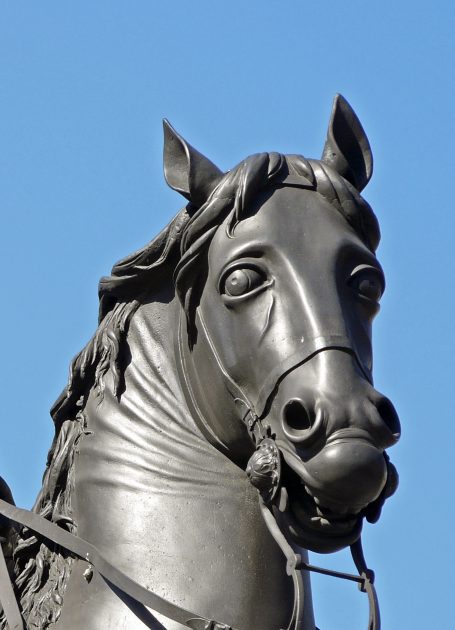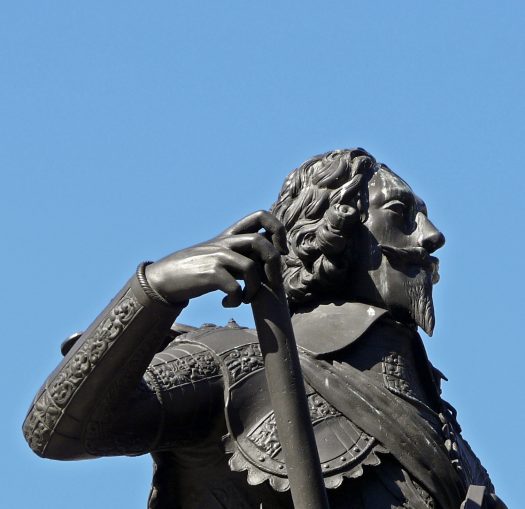The statue of Charles, based upon the one of Henri IV in Paris, was first placed in the churchyard of St Paul’s Church in Covent Garden, London. On the outbreak of the civil war in 1642, the statue was hidden in a crypt. Thirteen years later, it was seized by Cromwell’s men and sold for the rate of old brass to a clever man: John Rivett, a metalworker. He pretended to have melted it down and then sold countless mementos – supposedly made from the statue’s bronze – to Royalists. Puritans also gloried in its destruction and bought pieces to celebrate the king’s downfall. After the Restoration, the statue reappeared and after some ownership disputes, became the property of Charles II in 1675. He erected the statue that year on a pedestal carved after a design by Christopher Wren.
Charles I now looks down upon the place of his execution. Charles’ sword has been a source of trouble. It was stolen in 1844, replaced and broken in 1867 and stolen again. It was finally replaced when the statue returned from its wartime evacuation at Mentmore.
The statue of Charles I would serve as an artistic reference point for equestrian statues in the UK for more than a century. This is a mild way of putting it, because the horses in the statues of Charles II, George I, William III and Frederick, Prince of Wales, are copies (with only slight variations) of the horse in the Charles I statue.
